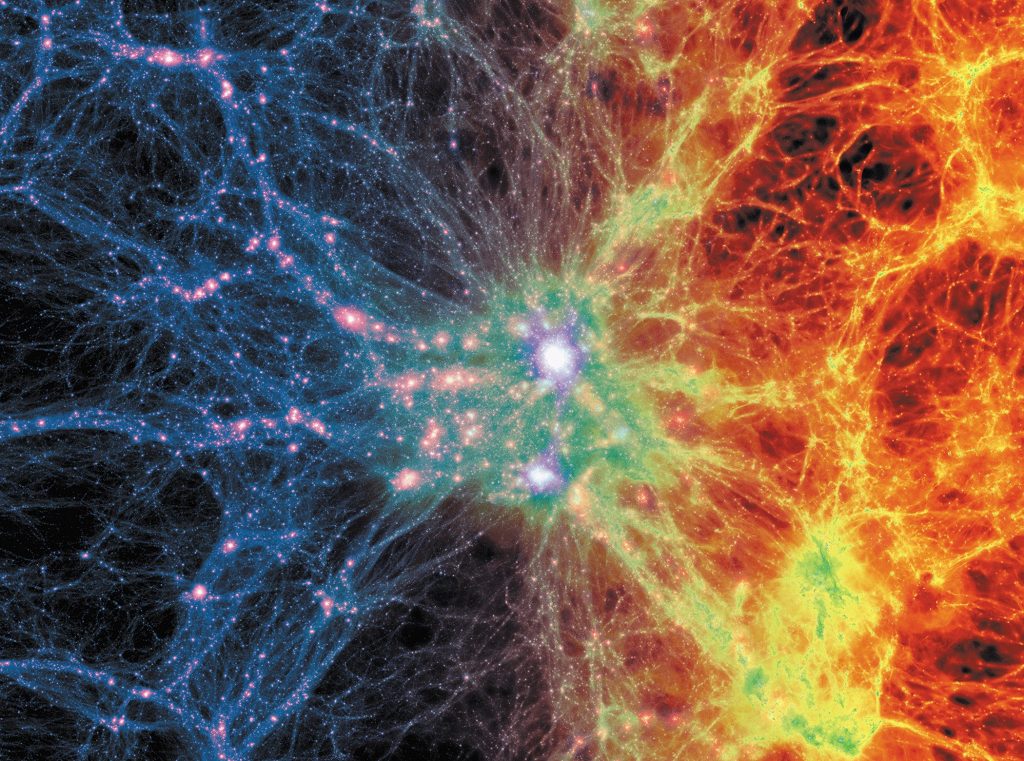The vastness of the universe has always been a subject of fascination, prompting profound questions about its structure, shape, and geometry. Cosmic Topology, a branch of theoretical cosmology, delves into the mathematical study of the universe’s topology, exploring the intricate patterns, spatial configurations, and cosmic connections that define the universe’s vast expanse. In this article, we will explore the captivating world of Cosmic Topology, uncovering its theoretical foundations, mathematical principles, and the profound implications it holds for our understanding of the cosmos.
Introduction to Cosmic Topology
Cosmic Topology seeks to unravel the spatial structure, connectivity, and geometry of the universe, investigating the underlying patterns, topological features, and cosmic motifs that shape the fabric of the cosmos on the largest scales.
- Topological Concepts and Spatial Geometry: Topology studies the properties of space that remain unchanged under continuous deformations, transformations, or mappings, exploring the intrinsic characteristics, connectivity, and relationships between points, lines, surfaces, and higher-dimensional spaces within the universe’s vast cosmic tapestry.
- Cosmic Scale and Observable Universe: The observable universe, a sphere with a radius of approximately 46.5 billion light-years, represents the portion of the universe accessible to observation and exploration, providing insights into its large-scale structure, cosmic web, and the distribution of galaxies, clusters, and cosmic structures across cosmic distances and epochs.
Theoretical Foundations and Mathematical Frameworks
Theoretical cosmology employs mathematical models, equations, and frameworks to describe, analyze, and predict the universe’s topology, dynamics, and evolution, integrating insights from general relativity, quantum mechanics, and observational astronomy to explore the universe’s shape, curvature, and cosmic connections.
- Friedmann-Lemaître-Robertson-Walker (FLRW) Metric: The FLRW metric, a cornerstone of cosmology, describes the universe’s homogeneous, isotropic expansion governed by the Friedmann equations, enabling the formulation of cosmological models, scenarios, and predictions regarding the universe’s topology, geometry, and fate within the context of general relativity and observational data.
- Topological Invariants and Cosmic Signatures: Topological invariants, mathematical tools, and observational signatures provide insights into the universe’s topological features, spatial configurations, and cosmic connections, exploring the cosmic microwave background (CMB) radiation, large-scale structure, galaxy distributions, and the imprint of cosmic topology on the universe’s observable properties, cosmic patterns, and the cosmic web’s intricate architecture.
Cosmic Topologies and Universe Shapes
Various theoretical models, simulations, and mathematical constructs propose different cosmic topologies, universe shapes, and spatial geometries, reflecting diverse scenarios, possibilities, and cosmic motifs that define the universe’s vast expanse, connectivity, and the dynamic interplay of cosmic forces shaping the cosmic landscape.
- Flat, Open, and Closed Universes: The universe’s curvature, described by its density parameter, determines its geometry and shape, with flat universes exhibiting Euclidean geometry, open universes featuring hyperbolic geometry, and closed universes manifesting spherical geometry, influencing the universe’s topology, connectivity, and the cosmic pathways linking distant regions of the cosmos.
- Toroidal, Poincaré Dodecahedral, and Klein Bottle Universes: Exotic cosmic topologies propose toroidal, doughnut-shaped universes, Poincaré dodecahedral spaces, and Klein bottle configurations, reflecting nontrivial, multiply connected spaces, and the intricate spatial patterns, cosmic connections, and higher-dimensional geometries that define the universe’s topology, structure, and the cosmic tapestry of interconnected cosmic pathways, cosmic motifs, and the dynamic interplay of cosmic forces shaping the cosmic landscape.
Observational Challenges and Cosmic Topology Tests
Observational challenges, cosmic puzzles, and scientific investigations aim to probe, test, and explore the universe’s topology, searching for subtle, indirect, and elusive signatures, imprints, and evidence that reveal the cosmic structure, geometry, and the intricate patterns that define the universe’s vastness, complexity, and the cosmic connections linking its diverse regions.
- Cosmic Microwave Background (CMB) Anisotropies: The CMB, the relic radiation from the early universe, exhibits subtle temperature fluctuations, polarization patterns, and spectral distortions that carry information about the universe’s topology, geometry, and the cosmic pathways traversed by photons, revealing insights into the universe’s large-scale structure, cosmic web, and the imprint of cosmic topology on the cosmic microwave background radiation’s intricate patterns and properties.
- Large-Scale Structure and Galaxy Surveys: Galaxy surveys, cosmic redshift surveys, and large-scale structure analyses explore the universe’s galaxy distributions, cosmic voids, filamentary structures, and the spatial distribution of cosmic structures across cosmic distances, investigating the universe’s topology, connectivity, and the cosmic web’s architecture through observational data, simulations, and computational models that reveal the cosmic landscape’s complexity, dynamics, and the cosmic motifs that define the universe’s vast cosmic tapestry.
Conclusion
Cosmic Topology, with its mathematical elegance, theoretical richness, and profound insights, offers a captivating window into the universe’s shape, structure, and cosmic connections, unveiling the cosmic motifs, spatial patterns, and the intricate cosmic tapestry that define the universe’s vast expanse, complexity, and the dynamic interplay of cosmic forces shaping our cosmic journey, destiny, and the eternal quest for truth, understanding, and the timeless wonders that inspire wonder, curiosity, and a renewed appreciation for the grandeur, diversity, and interconnectedness of the cosmos, celestial phenomena, and the boundless realms of the universe and beyond.
As we explore, contemplate, and unravel the enigmatic realm of Cosmic Topology through mathematical inquiry, theoretical cosmology, and the pursuit of knowledge, we embark on a journey of discovery, exploration, and enlightenment that transcends boundaries, deepens our understanding of the universe’s complexity, beauty, and the mysterious interplay of cosmic forces, particles, and energies shaping our cosmic journey, destiny, and the eternal quest for truth, meaning, and the timeless wonders that inspire wonder, curiosity, and a renewed appreciation for the grandeur, diversity, and interconnectedness of the cosmos, celestial phenomena, and the infinite expanse of the universe and beyond.
Read More: The Goldilocks Zone: Finding Planets Just Right for Life
